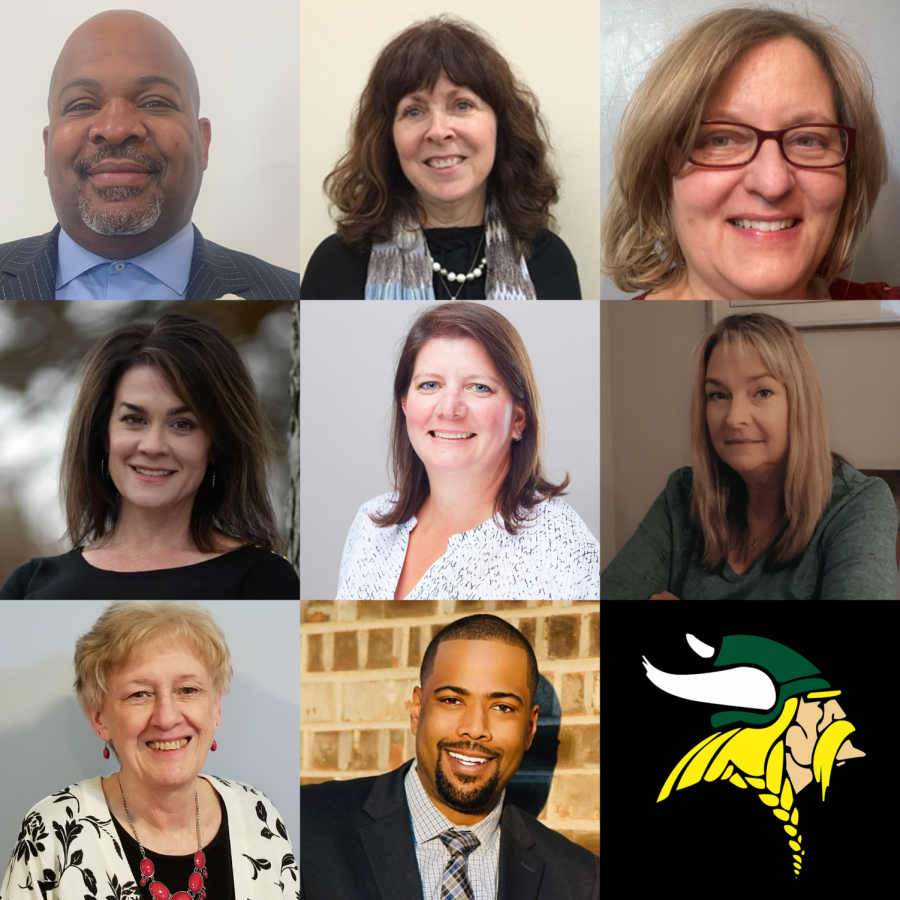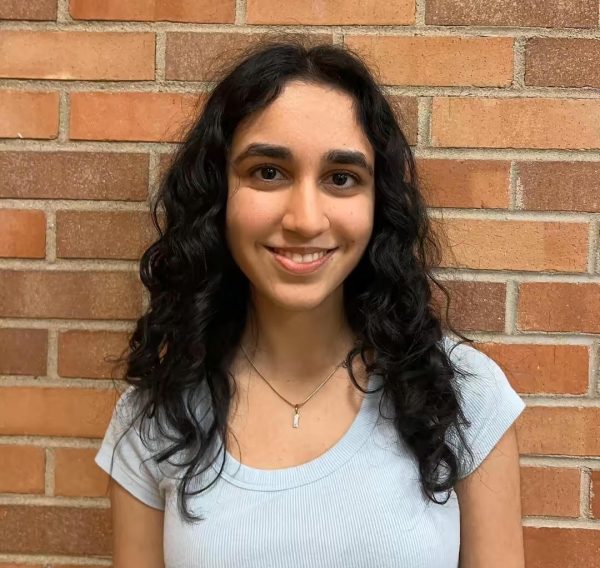COVID-19 – 2021 District 211 Board of Education Election Candidate Questionnaire
March 18, 2021
The Viking Logue sent out a questionnaire to all nine candidates in the District 211 Board of Education race. See all of the candidates’ responses to one of the questions below. See here for The Logue‘s full coverage of the April 6 election, including the candidates’ responses to other topics on the questionnaire.
How can the district support the mental health, physical well-being, and academic achievement of students during the pandemic? How should the district approach reopening?
Curtis Bradley: The response to the pandemic by our district has been exceptional. Programs have been implemented, practically overnight, to address the needs of our students and families. These include assistance with meals, social-emotional support, community resources, and educational support, among many others. The School Board has been flexible and adaptable when making decisions to best serve our students and families, but I believe the Board needs to better address the needs of students that are struggling with the remote learning/hybrid model. The Board needs to acknowledge this issue and find solutions that are equitable.
I believe that students learn best in the classroom setting. This can be done safely and our District has implemented safety measures at each school. Guidelines established by the CDC and ISBE should be considered when making return to in-person learning decisions. The fall semester showed that while many students have adapted to this enormous change in education, many are struggling. I would like to see more flexibility on how to address the students that find remote learning difficult. We need more support for these students.
Denise Wilson: The biggest challenge is the long term affects of students being out of school and elearning, not only the academic loss but the social and emotional affects. Data continues to support that the harm from not being in school is long term. And mental health-related issues are greater in children over the age of 11. The Board will need to look at assessments to identify learning gaps and devise strategic responses to support what the students know or don’t know, you can not go straight into grade-level curriculum.
Robi Vollkommer: The timing of this question is a little late since we are already in mid-March.
I firmly believe we could have reopened the schools with full-day in-person learning awhile ago. There are several school districts like D304 that have been providing an in-person learning option for students from the beginning of the pandemic. Districts D214 and D220 will now be going back to in-person and full days after spring break. D304 has also provided two independent teaching staffs, one for remote learners and one for in-person students.
I feel the district could have looked at other school districts, both in-state and out-of-state as guidelines for reopening or explored additional options by thinking outside the box.
Kristen Steel: We must focus on reconnecting our children to the routine of success. Social interaction plays a large role in mental health. Additionally, social interaction is vital to the development of soft skills employers will be seeking to identify once the pandemic ends. The district should approach re-opening as aggressively as laws and best practices safely allow. DO NOT be misled by fearful adults that would suggest you are at a higher risk than the data suggests. Be safe, but also be reasonable.
Jessica Hinkle: It’s no secret that Covid-19 has changed our lives forever, but that doesn’t mean our kids have to suffer. We need to work harder, faster and more creatively at to get back to true/full in-person learning, activities and sports while maintaining a safe environment.
I think this past year’s educational experience has lacked focus on mental and emotional health, social development and interaction. Beside those concerns, the districts response has been very slow paced and is stifling the ability to deliver quality education.
This has no doubt been difficult on the students and teachers and I credit many of the teachers on really trying to make the best of the situation, but as a district, I think we needed and still need to think outside of the box to best support students an teacher.
We need used the localized Covid-19 data to determine how to initiate full in-person learning. We should look to and initiate conversations to our neighboring private schools and districts that have been in-person since the start to learn the do’s and don’t’s. Then To do this we need to set up the classrooms to accommodate for the most possible volume of students in a safe manner. This would include options like the use of Plexiglas (where needed) updating the HVAC units for better filtration, introducing air scrubber units and looking into the value of UV-C in HVAC systems.
We should revisit the original hybrid model presented. Allow for teachers to focus on one or the other platform, but not both at the same time. I think if we communicated this plan out to the parents and students we would see many more students in the classrooms (knowing they would be off of zoom). For those that health concerns that need to stay remote, give them the dedicated resources they need. And for those in school let the teachers speak directly to them, not through a zoom.
Lastly, we need to get students and teachers reengage in academic. In a recent FIOA request shared with me, it was asked how many teachers that have been permitted to work from home, but come onsite for extracurricular activities. I was shocked to see that there were any and all, let alone 10. I personally think that if a teacher can come into the school for extracurricular activities, they should be onsite for teaching too. By allowing this we are indirectly indicating student know that activities are more importance than academics.
Roxanne Wittkamp: At this time, the district is allowing students to come back to school, and now several sports are allowed to be played. I believe this is what D211 students need. Again, I believe the district’s biggest challenge will be closing the gap in learning from the pandemic. Depending on the subject, students will need more help and support through tutors and small group learning.
Anna Klimkowicz: COVID-19 is a traumatic event that has caused disruption in every aspect of our lives – education, finances, jobs, socializing travel and death of family members, friends and even strangers. Therapeutic support is a must; however, each person approaches it differently. As for our students, I support all opportunities for our students to be in the school building, be it in class, academic supports, activities and sports. The ability to socialize is important to all, especially teens.
As a district we upgraded our ventilation systems and increased sanitation. We aggressively purchased personal protective equipment well beyond the minimum requirements and used it to offer safe in person learning to our most vulnerable students in early fall. We expanded into opening for safe in person learning for all students soon afterward and made sure the 50% of our families who requested remote learning did so right alongside their in person peers.
We cannot say that all students learn the same, therefore our teachers provide differentiated teaching. It was important to have staff in the classroom to provide a stronger learning environment. Staff have seen students struggle and are working with them to address their needs. Many of the incompletes from the 1st semester have been addressed with additional support of mentoring, tutoring and attention of student needs. Those supports will continue. As for mental health support, that must continue and become more visible as more students return to the classroom and share their stories. Our school counselors are available, our staff is available and we have community partners for counseling services. There are numerous coping strategies that can be shared with students and staff and I would direct administration to explore these and others and see how they can be incorporated into the classes.
At this time, I believe we are planning on opening the fall of 2021 as a traditional school year.
Administration will look to the ISBE for updates and information.
Tim Mc Gowan: The biggest challenge facing our district is the lack of mental health support for students. During this pandemic, students have felt the impacts of isolation from their classmates and teachers. But even before this pandemic, students did not have access to the mental health services that are necessary for them to be the best learners they can. As students get back on track with in-person learning, it’s important that we focus on well-being in addition to academic achievement. I will start by increasing district communications with parents about the resources available to them and their students. We also need to make sure that mental health is treated as a priority, not an afterthought. Students should have easy and regular access to mental health resources.
In regard to physical well-being, the district is providing the option to play certain sports and attend practices. I am a proponent of keeping these running as long as they adhere to COVID safety protocols. The district needs to be extremely careful when approaching reopening schools. Students under 16 cannot be vaccinated yet, and vaccinations are still rolling out for people above that age. Right now, the district is doing a good job of offering both hybrid and in-person learning options. Until it is safe, we cannot mandate all students return to in-person learning and must keep a virtual option open. We also should not question why people may want to stay home as the pandemic continues. It is an unprecedented time and the devastating nature of this pandemic needs to be taken into account before mandating a broad policy that could possibly harm students or their families.



